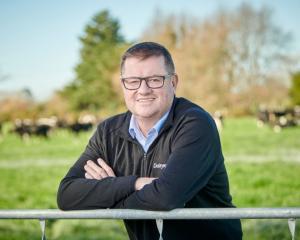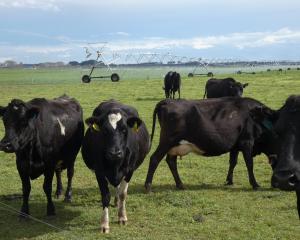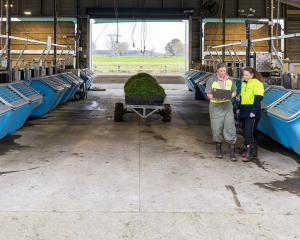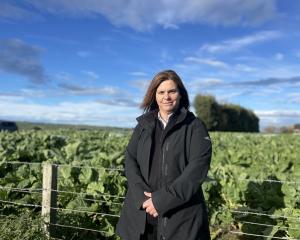
Southland sharemilker Nan de Haan is proud to own a dairy farm, which is "hitting its stride".
Mr de Haan and his wife Marissa and sons Lewis, 4, and Colin, 2 months, are in their fifth season 50:50 sharemilking at Awarua Wetlands, about 20km east of Invercargill.
When they started, the dairy farm had a major facelift including a new milking shed, fences, lanes, feed pad, effluent system, house and extensive regrassing.
The grass was performing, the herd was fertile and milk production was humming, Mr de Haan said.
This season, farm owners Greg and Sonya Herbert would sell them their half share of the property.
"We are going to be proud half-farm owners," Mr de Haan said.
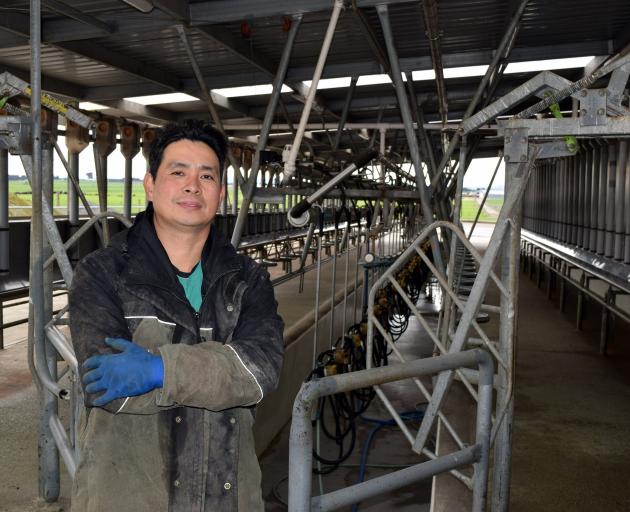
The de Haans were contract milking when they began establishing their herd for an average price of $1400 each.
"I got them from here, there and everywhere," Mr de Haan said.
A major focus when selecting foundation heifers and cows was their production worth, an index estimating a cow’s lifetime production ability.
Breeds in his herd included Jersey, Holstein Friesian and Norwegian Red.
The herd was analysed before mating to identify qualities cows needed and qualities bull semen could bring.
"There are no bad cows and no bad bulls — there are only wrong combinations," he said.

"This is how I hope to get this group of liquorice allsorts to be a more coherent herd," he said.
Mating starts on November 1 and the herd begins calving in early August.
Calves stay on until early December and then go to a grazier in Fortrose, on the western edge of the Catlins.
The heifers stay in Fortrose for two winters, returning home mid-July to a bed of woodchips near the feed pad. All of the cows were wintered on farm.
After the herd was dried off this season, about 225 cows would be wintered on grass and baleage.
"It is a simple system — pretty much just feed them until they’ve finished it," he said.

"I sometimes put the late calvers in there before I dry them off to stretch my season out and then swap them with my earliest calvers."
Baleage and silage was made on farm and bought in.
His silage feeding plan was to "feed it until the cows are happy" rather than measuring it and feeding out a certain amount.
A new feed management practice was drilling about 150kg of oat seed in late July in paddocks to winter cows.
If conditions were favourable, two cuts of oats were available by late November and then the paddock was ploughed and regrassed.
This season, the herd began eating supplementary feed from a pad earlier this month.
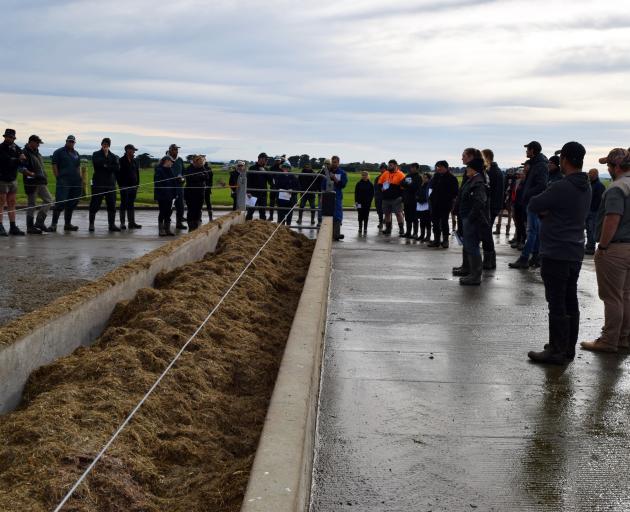
A wet and cold spring last year meant the cows spent most of the season on the feed pad.
Milk production was about 4% down on last season.
The drop was due to a wet autumn last year, prompting an earlier dry off than usual.
If autumn was favourable, some cows were milked for up to two weeks into winter.
The herd was now being milked twice a day and the frequency would reduce to once a day at the end of this month, he said.
Now cows were being given palm kernel and distiller's dried grains in the milking shed.

"Cows need energy to milk," he said.
On average, 591kg of milksolids was produced per cow in the 2023-24 season.
The herd had the potential to produce more than 600kg of milksolids "with similar profitability, if not sharper".
"We have not peaked yet."
More milk could be produced from more precise feed management, he said.
The farm had forgiving sandy soil and a temperate, summer safe climate, which helped grow grass.








